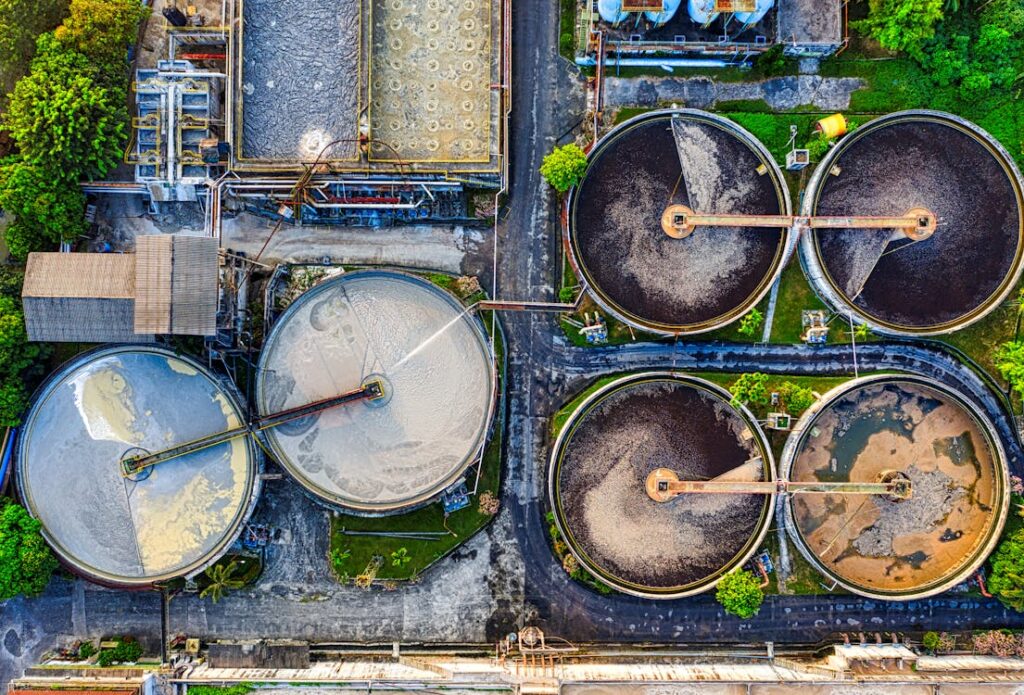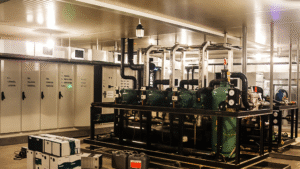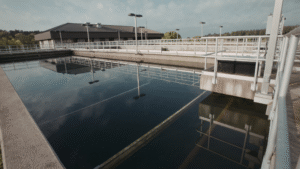Understanding Coagulants and Their Role in Water Treatment Efficiency
Coagulant water treatment is one of the most important stages in any water or wastewater treatment process. Whether the goal is to produce clean drinking water, improve industrial process water quality, or meet regulatory discharge standards, coagulants play a key role in enabling solid-liquid separation.
The principle behind coagulation is simple: most particles suspended in untreated water carry a negative charge, which keeps them stable and dispersed. Coagulants—typically positively charged chemicals—are added to neutralize those charges, allowing particles to come together, form larger flocs, and be removed through sedimentation, flotation, or filtration. Without effective coagulation, downstream wastewater treatment processes like flocculation, clarification, and membrane filtration become less efficient, less predictable, and more costly to maintain.
But achieving optimal performance from coagulants is far more complex than simply choosing a product and dosing it at a fixed rate. In reality, coagulant performance depends on many variables, including the specific type of contaminant, the chemistry of the source water, the design of the treatment system, and the coagulant’s own formulation.
Poorly optimized coagulant dosing in a treatment process can lead to:
- Overdosing, which increases sludge volumes, causes pH instability, and raises chemical costs
- Underdosing, which leaves fine particles in the water, reducing clarity and risking regulatory violations
- Incompatibility, where the coagulant used is not suitable for the water chemistry or treatment objectives
Understanding how different coagulants behave—and how to apply them effectively—is essential to improving process efficiency, reducing waste, and maintaining system performance. ETI is here to provide support in that design, selection, and implementation of a coagulation process.

Types of Coagulants: Inorganic, Organic, and Hybrid Options
Coagulants used in water and wastewater treatment generally fall into three main categories:
1. Inorganic Coagulants
These include metal salt-based coagulants such as:
- Aluminum sulfate (alum)
- Polyaluminum chloride (PAC)
- Ferric chloride
- Ferric sulfate
These inorganic coagulants are widely used in municipal and industrial water treatment due to their ability to destabilize suspended solids, colloidal particles, and natural organic matter. By forming insoluble hydroxide precipitates, they help capture fine particles and improve removal through sedimentation or filtration.
Inorganic coagulants tend to be cost-effective and offer fast charge neutralization, but they can increase sludge production and may require careful pH management during dosing.
2. Organic Coagulants
These are typically cationic polymers (polyamines, polyDADMAC) that offer:
- Lower sludge generation compared to metal salts
- Effective removal of organic compounds, oils, and grease
- Greater efficiency in low-turbidity or high-strength wastewater
ETI’s organic coagulants for wastewater treatment are particularly useful in industrial applications where metal salts generate excessive sludge or require significant pH adjustment. These polymer-based formulations improve contaminant removal while reducing sludge volume and chemical demand.
3. Hybrid or Blended Coagulants
These coagulants combine the mechanisms of both inorganic and organic types—offering the best of both worlds. They can:
- Optimize floc strength and suspended particle settling speed
- Operate effectively across broader temperature and pH ranges
- Lower total coagulant demand
- Improve compatibility with downstream systems like DAF, filtration, and biological treatment
These products are often application-specific, with formulations tailored to industry-specific needs such as food processing, metal finishing, or mining operations.
Why Coagulant Selection and Dosing Can’t Be Standardized
No two water treatment systems are exactly alike. Factors like water source, flow variability, target effluent quality, and treatment equipment design all influence how a coagulant will behave in practice.
As a result:
- A coagulant that works well in one plant may fail in another.
- The same product may require a completely different dose or pH adjustment depending on temperature or contaminant type.
- Even small changes in influent chemistry—such as seasonal shifts or a new industrial discharge—can drastically alter performance.
That’s why jar testing, pilot evaluations, and on-site performance reviews are core to ETI’s coagulant strategy. We don’t just sell products—we build optimized treatment programs based on data.
Determining and Maintaining Optimal Coagulant Dosage
Getting coagulant selection right is only half the equation. Once a product is chosen, the real challenge begins: dosing it properly and consistently to ensure optimal performance without wasting chemical, producing excess sludge, or compromising downstream processes.
In water and wastewater treatment systems, coagulant dosage and type of coagulant used must be customized to the specific characteristics of the influent water and the goals of the treatment process. This is not a set-it-and-forget-it situation—dosage optimization is dynamic and must adapt to variable influent quality, operational demands, and regulatory targets.
The Role of Jar Testing and On-Site Bench Trials
Before implementing a coagulant in full-scale operations, most facilities begin with jar testing. This simple but effective technique allows teams to simulate the coagulation and flocculation treatment process under controlled conditions, comparing coagulant types and concentrations on small water samples.
A proper jar test assesses:
- Floc size and structure
- Settling rate
- Residual turbidity
- Sludge volume and characteristics
- pH shift
Jar testing is especially critical when selecting between ferric chloride, aluminum sulfate, or organic coagulants, each of which interacts differently depending on the water’s pH, temperature, and contaminant profile. It’s also used to dial in coagulant-to-polymer ratios when both are being applied as part of a combined clarification program.
ETI offers both in-house and on-site jar testing as part of our coagulant support program, providing not only product recommendations but customized dosage strategies based on real-world variables.
pH, Alkalinity, and System Chemistry: Hidden Drivers of Performance
Many coagulants—especially inorganic coagulants like alum or ferric sulfate—can significantly alter the pH and alkalinity of the water. If alkalinity is too low, adding metal salts can drop pH below optimal levels, destabilizing floc formation and requiring alkaline addition (e.g., lime or soda ash) to restore balance.
This is why pH control must be monitored closely during dosing. Some coagulants, like aluminum chlorohydrate or advanced polymer blends and synthetic coagulants, are formulated to minimize this pH swing, making them a better fit in systems with limited buffering capacity.
Key takeaways:
- Always check pH before and after coagulant addition
- Understand how your coagulant interacts with other treatment chemicals
- Use inline pH monitoring when treating variable or industrial influent
What Happens When You Overdose or Underdose
Overdosing Risks:
- Higher chemical costs with no performance gain
- Increased sludge production, or significantly heavier hydroxide sludge, especially with metal coagulants
- Risk of forming colloidal re-stabilization (when too much positive charge causes particles to repel again)
- Lower filter run times or fouling in downstream membranes
- Residual metals or polymers in treated water
Underdosing Risks:
- Incomplete coagulation, leaving suspended particles in solution
- Poor settling, leading to carryover into filtration systems or discharge
- Increased demand on downstream units (e.g., DAF, membranes, biological systems)
- Regulatory violations due to turbidity, color, or residual organics
Proper coagulant dosing is about finding the narrow window of effectiveness—and staying in it consistently.
Process Monitoring: The Key to Consistency
Because influent water conditions shift constantly (seasonal changes, storm events, industrial discharge variation), coagulant dosing must be monitored and adjusted continuously. This is where process control becomes critical.
Recommended tools for dosage optimization:
- Turbidity meters (for assessing clarifier or effluent performance)
- Streaming current detectors (SCDs) (for real-time charge demand monitoring)
- pH and ORP sensors (to track chemical balance and oxidation conditions)
- Flow-based dosing controllers (to adjust coagulant feed rate in real time)
- Sludge blanket monitors (to observe sedimentation behavior)
Integrating these tools into your building automation system (BAS) or SCADA platform allows facility managers and treatment operators to catch problems early, adjust proactively, and document performance for compliance or process improvement.

Strategies for Improving Coagulant Efficiency and Process Outcomes
Optimizing coagulant dosage doesn’t stop at product selection or initial jar testing—it requires a holistic approach to water treatment process performance. From automation and system integration to emerging coagulant technologies and field-level service, the best results come when dosing strategy, equipment, and chemistry all work together.
ETI supports treatment facilities across industries with targeted strategies to reduce chemical waste, improve contaminant removal, and enhance long-term system reliability. Here’s how
1. Automating and Integrating Coagulant Dosing Controls
In many systems, coagulants are still dosed at a fixed rate, regardless of real-time changes in flow, turbidity, or influent chemistry. This “set-and-forget” approach leads to frequent underdosing or overdosing—both of which result in inefficiencies.
To move beyond this, many facilities now implement:
- Flow-paced dosing systems – Adjust coagulant feed rate in proportion to incoming flow
- Closed-loop control using streaming current detectors (SCDs) – Continuously monitor negative charge demand and adjust coagulant feed in real time
- SCADA or BAS integration – Automate response to conductivity, pH, or turbidity deviations and log performance data for QA/QC
Automated dosing reduces human error, responds to system variability, and ensures stable, optimized treatment—especially in large or continuously operating plants.
2. Emerging Coagulant Technologies: Smarter Chemistry for Better Results
New formulations are advancing the effectiveness of coagulants across a wide range of applications. ETI offers several next-generation options:
Dual-Mechanism Coagulants
These blends combine the benefits of both organic and inorganic coagulants, resulting in:
- Faster floc formation
- Stronger, more stable flocs
- Reduced sludge generation
- Lower total chemical consumption
This is particularly valuable in systems with variable influent conditions, where traditional metal salts may underperform or require extensive adjustment.
Metal-Specific Coagulants
Formulated to bind with and remove specific heavy metals like lead, copper, or chromium—ideal for mining, electronics, or metal finishing facilities.
Biopolymer-Based Coagulants
ETI’s biopolymer coagulants are plant-derived and biodegradable, making them a strong fit for operations focused on sustainability and reducing chemical impact. While these formulations offer clear environmental advantages, they can be more expensive than traditional options and may exhibit batch-to-batch variability—especially when derived from natural sources.
As a result, biopolymer coagulants are best suited for applications where sustainability is a top priority and system conditions are well-controlled, such as:
- Food and beverage wastewater treatment
- Eco-sensitive discharge areas
- Facilities aiming to minimize synthetic chemical usage
3. Matching Coagulants to Downstream Processes
The type of coagulant you use can affect more than just settling of suspending solids—it can influence performance in downstream systems such as:
- Membrane filtration
- Dissolved air flotation (DAF)
- Biological treatment
- Sludge dewatering and drying
For example:
- Excess metal hydroxide sludge from overusing alum or ferric chloride can reduce membrane life and increase filter fouling
- Organic coagulants may improve DAF clarity by enhancing floatation behavior
- That said, in membrane-based systems, certain organic coagulants may increase the risk of fouling if not properly matched—reinforcing the need for compatibility testing during selection.
- Biopolymer options may help reduce interference in nitrification processes in biological systems
ETI’s coagulant selection process considers not just the immediate treatment goal—but the entire system, ensuring compatibility and long-term performance.
4. Field Support and Ongoing Optimization
Even the best coagulant won’t perform well if it’s applied inconsistently, or if system conditions change over time. That’s why ETI provides ongoing technical support, including:
- Routine performance reviews to monitor trends and make dosage adjustments
- Sludge characterization to improve dewatering efficiency and reduce hauling costs
- Chemical program audits to identify overlap or interaction between treatment chemistries
- Training and documentation for operators and supervisors
As regulations tighten and discharge limits grow more complex, facilities must adapt—not just once, but continually. ETI’s commitment to field support ensures that your treatment program keeps pace with evolving needs.
Conclusion: Optimized Coagulant Programs Require More Than Chemicals
Coagulants are essential—but only when paired with the right equipment, strategy, and service. From jar testing and bench trials to real-time automation and advanced formulations, optimizing coagulant dosage is a dynamic process that can significantly improve clarity, compliance, and cost efficiency.
Whether you’re managing an industrial facility, municipal plant, or specialized process, ETI’s coagulant solutions are engineered to deliver measurable performance in your water treatment process.
Looking to optimize your coagulant program or troubleshoot treatment performance?
Contact our specialists today to schedule a system review or discuss how ETI’s advanced coagulant solutions can help.
Explore ETI’s full Coagulant Water Treatment product line to learn more about available formulations and how they support optimized clarification strategies.





